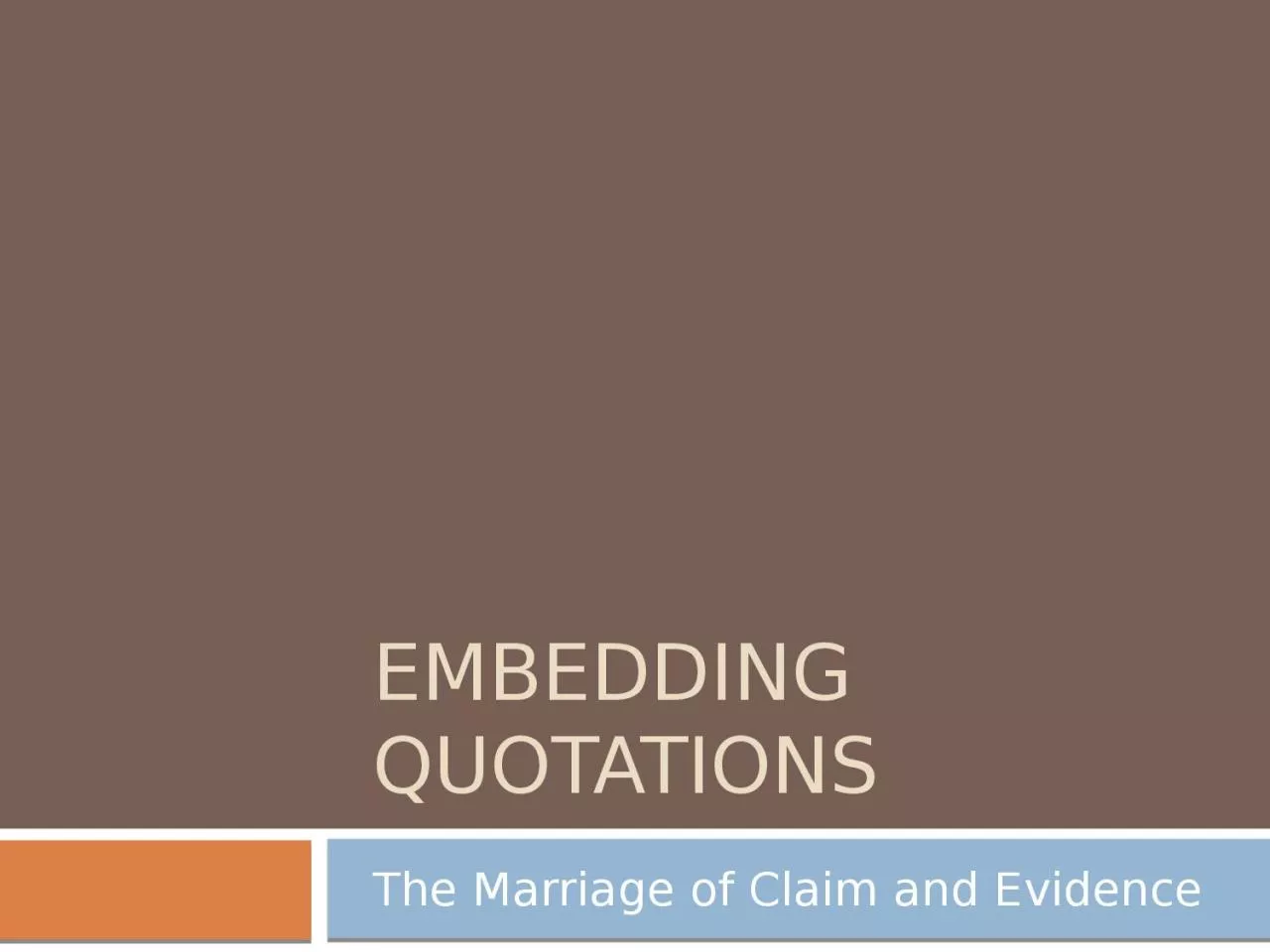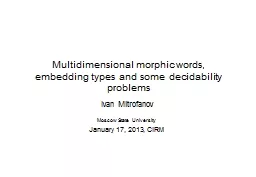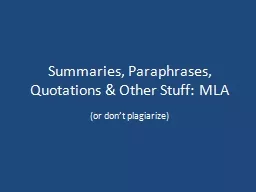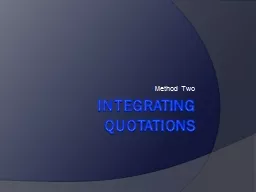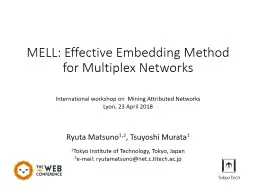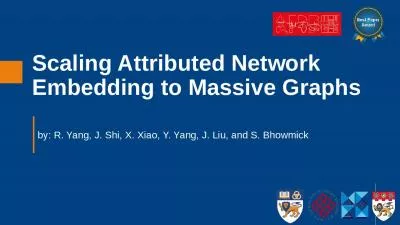PPT-Embedding quotations The Marriage of Claim and Evidence
Author : williams | Published Date : 2023-09-20
Embedding quotations by Dr Andrew Osborn Introduction Most of the essays that you write for courses in the Literary Tradition sequence will be arguments based on
Presentation Embed Code
Download Presentation
Download Presentation The PPT/PDF document "Embedding quotations The Marriage of Cla..." is the property of its rightful owner. Permission is granted to download and print the materials on this website for personal, non-commercial use only, and to display it on your personal computer provided you do not modify the materials and that you retain all copyright notices contained in the materials. By downloading content from our website, you accept the terms of this agreement.
Embedding quotations The Marriage of Claim and Evidence: Transcript
Download Rules Of Document
"Embedding quotations The Marriage of Claim and Evidence"The content belongs to its owner. You may download and print it for personal use, without modification, and keep all copyright notices. By downloading, you agree to these terms.
Related Documents

